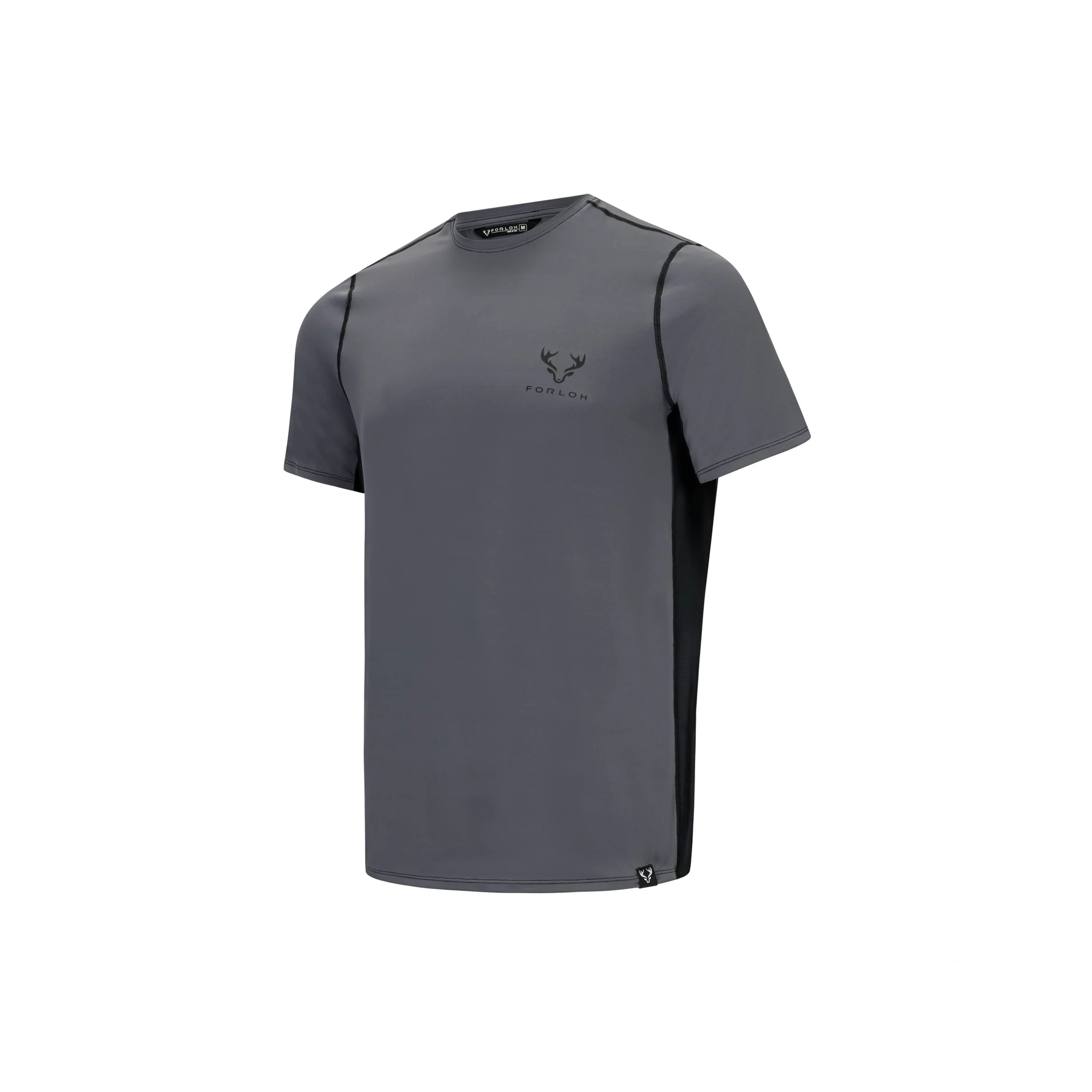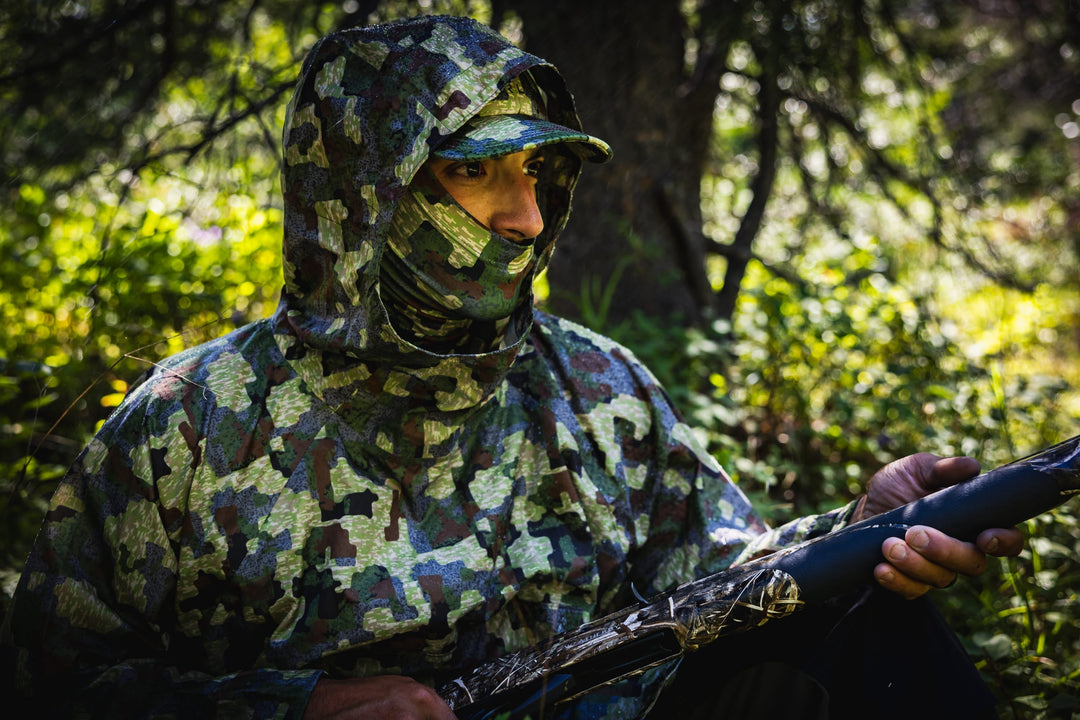By Everett Headley
Being blessed to live in Montana, my hunting never really stops. When the big game seasons dissolve into whiskey sipping by a fire and the frozen water invites ducks and geese to move on, there are still two very intelligent and very difficult to hunt big predators: mountain lions and wolves. Each one requires specialized knowledge and significant effort to find success. The unique experience of hunting each will reward that ambitious hunter with a tale few others can tell. Our third predator are the smaller song dogs, but don’t discount coyotes for winter hunting opportunities. 
Winter provides the ingredient to effectively track predators on the landscape: snow. Freshly fallen powder covers old sign and welcomes a new foot to leave a track. Having a thorough understanding of tracking will tell you its route, frequency of the area, how many, and their behavior. These are all keys in determining if an area will be productive. Fresh sign will be crisp with ridges in between toes intact. Learning to differentiate between wolf and lion tracks can be difficult. Lion tracks will of course be void of nail points and will be more circular overall. Wolf tracks have nail points and are more oblong in their appearance. They are also symmetrical, meaning if you drew a line half through the track they would mirror each other. Lion tracks have a leading toe that will be more forward of the others and will not halve cleanly.
Wolves
Wolf hunting is very close to classic western hunting. The strategy most used (aside from trapping) is glassing. High vantage points into areas that hold prey animals are key to locating a pack. Finding a fresh kill helps to pinpoint an area and wolves will return to feed. Once fresh sign or a pack has been spotted, closing the distance to an ethical shot can be done in two ways: either calling in the pack with howls (wolf or coyote) or moving in playing the wind and terrain. Wolves are extremely intelligent and you will have to match their moves. You will very likely be outmanned with pack sizes ranging from a few to nearly 20. I recommend carrying an insulated seat cushion and Forloh’s Thermonuclear Down jacket and pants to stay warm while stationery. Wolves are worthy pursuit and test of your tracking prowess.
Lions
The intrepid houndsman will rise early to be ready with dogs at the trailhead and when the snow falls he can begin the search. Once released the dogs will put on a chase that will test your endurance. Hiking mountain inclines is tough, but it is compounded when there is snow and urgency to reach the dogs quickly. There really isn’t any better way to hunt lions than behind dogs. I can’t count the number of times I have come down a mountain and found a lion track in mine, but I only need two fingers for each time I’ve seen one. Being prepared for the up and down chase means layers with a waterproof shell like the AllClima Jacket. I highly recommend gaiters to fend off the deep snow and thickets. It is amazing to see how cunning lions can be by backtracking and circling as they evade the dogs. Seeing your first cat in a tree just only a few yards away is arresting. This is the top predator on the mountain and being this close is when you realize it.
 The "kill claw" of a mountain lion is larger than the others and helps the lion maintain its hold.
The "kill claw" of a mountain lion is larger than the others and helps the lion maintain its hold.
Coyotes
Lion and wolf hunting requires significant effort and investment. It also usually means that you are done once a tag is filled. Coyote hunting is much more relaxed and can be more communal. Setting up calls and waiting for them to run to you is relaxed compared to trying to find baying dogs on a lion. But to be effective requires good concealment and camouflage. Hiding among brush or sage and utlizing Forloh’s Snowfall which is designed to hide you in various levels of surrounding snow. Using a tripod can minimize your movement when raising and aiming your rifle. For those interested, a helpful understanding of the coyotes resiliency can be found in Dan Flores’ Coyote America.
After the Kill
Ethically hunting predators requires forethought and consideration of the animals before the harvest. Pelts are in prime condition during the winter. Knowing how to handle and prepare them increases their value if you plan to market them to fur buyers. Or you can have the hides tanned and make your own clothing with them. Ensuring a proper use and disposal of the animal after the kill is the highest ethics.
And while not as popular, predators can be good table fare. My hunting buddies and I are biscuits and gravy connoisseurs. We once drove two hours during a morning Wyoming antelope hunt to what is easily a top five B&G place in the country. When I brought home my first lion I knew that it was destined to become breakfast sausage. And there is no comparison, it ranks number one on all of our lists as the best biscuits and gravy. Proper handling and cooking recommendations by your state wildlife agency need to be followed closely.
We need to do our best as hunters to represent the hunt as honorable and ethical.
Ethically Hunting Predators
Predator hunting is enduring the harshest and most intense attacks our hunting heritage has ever seen. Far in the depths of memories are the days when bounties and professional hunters were paid to find and eradicate anything with sharp teeth. What remains will require careful attention and determination by sportsmen in how they present the hunts and the hunted. Scientific arguments have largely been replaced with emotional responses. The iconic presence of bears, wolves, and lions are easily used by anti-hunting agendas to sell emotional arguments against them being hunted. Tradition and heritage are disregarded as valid and appropriate reasons. Recognizing the current climate and adjusting our response may not win converts to predator hunting, but it may delay further calls for outright bans.

We need to do our best as hunters to represent the hunt as honorable and ethical. This can be done by telling the story of the hunt, complete with highs and lows. Those who do not hunt need to know our passion AND respect for the animals. Hunters should show what we do with the animals afterwards. Practicing restraint in our photos and where we post them can prevent their misuse and misinterpretation.
Shop featured items - Men's ThermoNeutral Down Jacket
About the Author: Everett Headley is an outdoor writer and educator. He grew up hunting and fishing in Montana and enjoys sharing his experiences with new sportsmen. He lives in the Bitterroot with his Chesapeake Bay retriever, Cane, and his peregrine falcon, Freyja.








